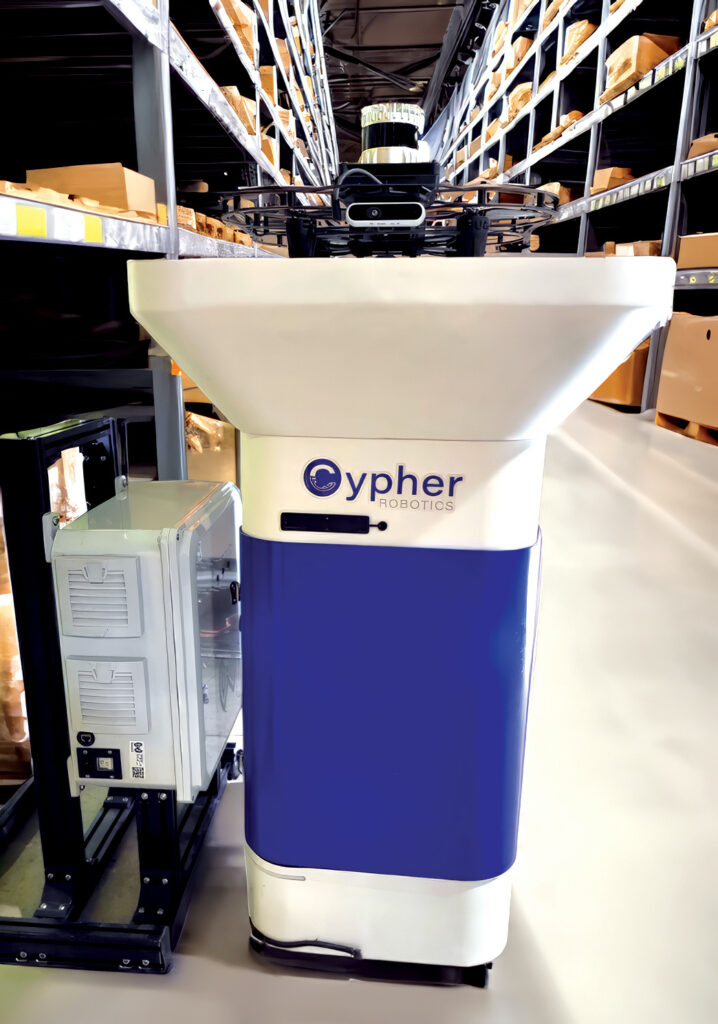Wireless charging of larger battery packs for AMRs

(Image courtesy of Wibotic)
Wibotic in Canada has developed 1 kW wireless charging for larger, autonomous mobile robots (AMRs), writes Nick Flaherty.
The 1 kW version is aimed at charging larger battery packs in larger AMRs, and for faster charging of smaller AMRs. It charges as fast as a 300 W plug-in charger and can still be used with factory outlets rated at 1-1.5 kW.
The charger enables a 1 C-Rate to charge a 2-3 kWh pack in two to three hours, but managing the charging rate to maximise the lifetime of the pack is also critical.
The Wibotic system uses a 6.78 MHz radio-frequency (RF) signal for the power transfer, and the design of the charger enables positional flexibility while making the onboard charger smaller. It measures 126 mm x 52.5 mm.
“For electric cars, everyone wants faster charging, but what’s really interesting is to charge in a way that maximises the battery longevity with a slower charge,” said Ben Waters, CEO and founder of Wibotics. “Autonomous robots have a similar trend. Some have the opportunity to charge overnight, but when they are in high demand you need the capability to put a lot of power into the packs. The charger adjusts from 0-60 V and 0-35 A of current, and this gives customers a lot of flexibility across different devices.”
This works across different battery chemistries and various types of AMR in a fleet of robots.
Another advantage of RF inductive charging is foreign object detection for anything metallic that gets between the coils. The higher power also gives more flexibility in positioning.
Wibotic found most AMR and automated ground vehicle (AGV) makers can navigate to within 2 cm, so the charger allows an offset of 4 cm vertically and 4 cm horizontally for the highest power. The system uses a proprietary, 2.4 GHz radio for communication, so if the coils separate too far, the system can determine the efficiency of the power transfer.
The charger can also be used outdoors.
UPCOMING EVENTS























